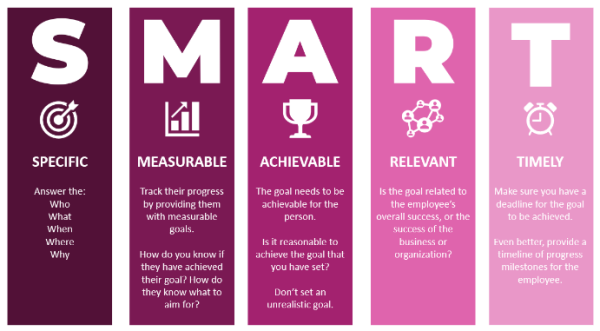The performance makeover: Transforming through improvement plans

Lorna Reid, Workplace Relations Consultant
A Performance Improvement Plan, or PIP, is a strategic tool designed to assist underperforming employees in achieving their position-specific goals and meeting business expectations. It will typically be used in instances where concerns arise regarding an employee’s performance, behaviour, or conduct.
It is important to note a PIP should not be viewed as a disciplinary measure, but rather a structured framework aimed at facilitating improvement.
A well-structured PIP is a roadmap for employee success, offering clear, measurable objectives. It can also be a basis for justifying termination based on legitimate business reasons, documenting performance-related issues and lack of performance improvement despite support and guidance.
The key is the support and guidance given to an employee.
When you are drafting a performance improvement plan, the following components should be included:
- Identification of underperformance: Clearly outline examples of underperformance and its impacts on the team or business. This step is essential for ensuring the employee comprehends the areas in which improvement is necessary. Providing real-time, relevant examples clearly communicates with the employee the aspects of their performance that you have deemed below the business standard.
- Establishment of clear and achievable goals: Provide the employee with specific, measurable, achievable, relevant and timely (S.M.A.R.T) performance goals. By providing the employee with clear and achievable goals, the employee can improve their performance to align with the team and business objectives.
- Provisions for support resources: Detail how the business will support the employee in their performance improvement efforts. This may include offering additional training, mentorship from colleagues or managers, regular progress check-ins, and supplementary learning materials. A well-structured PIP provides employees with the necessary tools and assistance to achieve their goals effectively.
- Establishment of feedback mechanisms: Create a system for regular feedback and discussions. This ensures consistent communication between the employee and manager throughout the PIP process. It is important to consider the frequency of check-ins and reviews, allowing for adjustments to the plan and providing encouragement of the employee as they progress.
- Clarification of consequences for inadequate improvement: Clearly outline the repercussions of failing to meet the outlined performance goals. Communicate the potential disciplinary actions, including the possibility of termination, if the employee does not demonstrate improvement within the specified timeframe. This ensures the employee is aware of the seriousness of the situation and the importance of meeting the established goals.
In the case of Yen Yap v Club Assist Pty Ltd [2022], the Fair Work Commission found an employee’s dismissal after failing to meet his KPIs in a performance improvement plan was unfair.
While there were a number of elements contributing to the overall unfairness of the dismissal, the KPIs set in the performance improvement plan were highlighted as an unfair measure of the then employee’s performance. Furthermore, there was minimal guidance provided to help the employee achieve those KPIs.
This case highlights the importance of employers meeting certain obligations when setting KPIs, such as providing clear expectations and giving employees the opportunity to address concerns.
It also emphasises the ability of an employee to challenge unrealistic or arbitrary KPIs.
When implemented effectively, PIPs can be beneficial for both the employee and the business. They provide employees with a structured opportunity to enhance their performance by identifying areas of improvement, establishing measurable objectives and receiving support from management. As the employee makes progress and achieves their goals, it can significantly enhance their confidence, morale, and overall job satisfaction.
When are they necessary?
PIPs are essential tools in addressing identified and persistent underperformance. The process becomes necessary when an employee consistently fails to meet the standards and requirements of their role. Underperformance, however, is not always indicative of a lack of effort; it can stem from various factors such as unclear expectations, skill gaps, or inadequate training and support.
Below are some examples of where implementing a PIP may be warranted:
- Policy compliance: When company policies mandate that performance issues must be addressed through a PIP.
- Historical performance: If the employee has historically been a strong performer and the decline in performance is a recent development.
- Consistent underperformance: When, despite clear communication and support, the employee consistently fails to meet job expectations, deadlines, or quality standards.
- Policy adherence: If the employee’s behaviour deviates from company policies and negatively impacts their own work and that of their colleagues.
- Team collaboration: When the employee struggles to collaborate effectively with team members.
If you have any concerns about whether you should implement a performance improvement plan, talk to our Workplace Advisory Services team.
The importance of S.M.A.R.T goals
Employers are responsible for establishing reasonable performance targets and justifying them to the employee if (or when) challenged. In the context of a PIP, setting goals using the S.M.A.R.T framework can be crucial for several reasons:
- Specific: Goals should be clear and unambiguous. Being specific helps employees understand exactly what is expected of them, reducing confusion and ambiguity.
- Measurable: Goals should be quantifiable, allowing progress to be tracked and measured. This helps both the employee and the manager assess how well the employee is meeting the goals.
- Achievable: Goals should be realistic and attainable. Setting unattainable goals can demotivate employees and lead to feelings of failure. It can also have legal implications if it is ever questioned by an employee.
- Relevant: Goals should be relevant to the employee’s role and the overall objectives of the business. This ensures the employee's efforts are aligned with the business’ goals.
- Timely: Goals should have a specific timeframe for completion. This helps create a sense of urgency and encourages employees to focus on completing the goals in a timely manner. The timeframe needs to consider what a reasonable time would be for the employee to show improvement on their performance. Things to consider include the employee’s hours of work (e.g. are they full time or part time).
By setting S.M.A.R.T goals in a PIP, managers can effectively communicate expectations, track progress and motivate employees to improve their performance.

|
Example of KPI without using the S.M.A.R.T framework |
Example of KPI in the S.M.A.R.T framework |
|
Submit your timesheets on-time and ensure there are no errors. |
Ensure that your timesheets have been submitted by 11:59 pm each Tuesday. The timesheets must equal your contracted hours and have all of your time accurate and accounted for, for the week. |
Common questions surrounding a performance management plan are detailed in the below FAQ.
PIP Template
Unlock your team’s potential with our comprehensive Performance Improvement Plan template, designed to drive success and foster a fair process.
- All Members: $154.00 inc. GST
- Non-Members: $275.00 Inc. GST
Email us at [email protected] for details.
FAQ for Performance Improvement Plans
Can an employee be terminated if they fail a PIP?
KPIs outlined in a performance improvement plan (PIP) are widely accepted ways to measure an employee’s performance. In most cases, if an employee does not meet KPIs then an employer can use this to contribute to the justification of an employee’s dismissal. However, in the case of Yen Yap v Club Assist Pty Lty [2022], the Fair Work Commission has confirmed employers must meet certain obligations when creating KPIs.
An employee should not be terminated simply because they have failed a PIP. An employee must still be afforded procedural fairness, which includes formal warnings about their behaviour and a reasonable timeframe to show improvement and an opportunity to respond.
Can an employee be put on a PIP for their “bad attitude”?
It entirely depends on the attitude that they are displaying.
If the attitude is disruptive to the team and/or potentially has a risk to other employee’s health and safety, Business Chamber Queensland’s Workplace Advisory Services team suggest the employee is provided with a warning letter about the attitude and resulting risk, and placed on appropriate workplace behaviours training.
Where an employer believes that the bad attitude is due to the employee not understanding workplace and/or role expectations, or is something that you believe you can support them in learning, a PIP may be the appropriate action.
Can I put an employee on a PIP and not tell them?
The quick and clear answer is – No.
A PIP is used to communicate performance issues clearly to the employee and to provide them with a structured plan to improve. It is important to have an open and honest conversation with the employee about their performance and the reasons for implementing a PIP. This ensures that the employee:
- Understands the expectations,
- Can seek clarification if needed,
- Understands the consequences of not improving their performance; and
- Actively work towards meeting the clearly articulated required performance standards.
The employee also needs to be afforded an opportunity to improve their performance. The employee cannot do this if the expectations are not clearly communicated with them, and the plan is shared.
If an employee has been on a period of leave during their PIP, can I extend their PIP?
If your employee has taken a number of days of leave during the PIP period, the PIP should cease for the period of paid leave.
If your PIP aims to address absenteeism concerns, then the expectation needs to be addressed at the start of the PIP process. As an employer, you must make sure you take into consideration the reasons for the absences and the employees’ legislative entitlements before making a decision on the outcome of the absenteeism performance.
Of note – the Fair Work Act 2009 (Cth) protects an employee from being dismissed due to a temporary absence for illness or injury for up to three months over a total of a 12-month period, or where an employee is on paid personal/carer’s leave for the duration of the absence.
Is there a maximum timeframe that an employee can be on a PIP for?
There is no set legislative timeframe for how long an employee can be on a PIP. The duration will vary depending on factors such as the company’s policies, the nature of the performance issues, and the progress made by the employee.
In general, a PIP is typically a few weeks to a few months long, with regular check-ins to track progress. If the employee is making significant progress but needs more time to meet the goals outlined in the PIP, the employer may decide to extend it.
If an employee is not showing improvement despite the support and resources provided during the PIP period, the employer may decide to take further action, such as a warning letter.
Despite the lack of a specific timeframe prescribed in legislation, an employee is entitled to be given a reasonable opportunity to improve. The reasonableness will come down to the specific skill they are being asked to improve.
It is important your policies and procedures have clear guidelines regarding PIPs to ensure they are used effectively and fairly.
Can you repeat a PIP for an employee?
Yes, it is possible to repeat a PIP for an employee if the issues that led to the initial PIP have not been adequately addressed. In some circumstances you may need to put them onto a new PIP if new issues have arisen.
Repeating a PIP can provide the employee with another opportunity to improve their performance or behaviour, but it is important for the employer to clearly communicate expectations and consequences, as well as providing support throughout the process.
What should you do if an employee on a PIP says they do not feel supported?
If an employee on a performance improvement plan expresses that they do not feel supported, it is imperative you address their concerns promptly. Some steps that you can take include, but are not limited to:
- Listen actively: Schedule a meeting to discuss their concerns and allow the employee to express their feelings and concerns openly.
- Acknowledge their feelings: Let the employee know that you understand their perspective and that their feelings are valid. Empathy can go a long way in building trust and rapport.
- Clarify expectations: Review the PIP objectives and clarify any areas of confusion. Ensure that the employee understands what is expected of them and how they can meet those expectations.,
- Offer additional support: Provide specific examples of how you can support the employee. This could include additional training, mentoring, or resources to help them improve.
- Address concerns: If the employee has specific concerns about their working conditions or support from their manager, address these issues promptly.
- Follow up: Schedule regular check-ins to monitor the employee’s progress and offer ongoing support and feedback.
- Seek feedback: Ask the employee for feedback on how you can better support them during the PIP process.
How can Business Chamber Queensland help?
Business Chamber Queensland members with HR services as part of their membership are invited to contact the Workplace Advisory Services team:
P: 1300 731 988
Businesses who do not have a HR membership may also seek assistance however a competitive consultancy fee will apply for any advice and assistance provided.
For membership enquiries, please contact our membership team on 1300 731 988.







